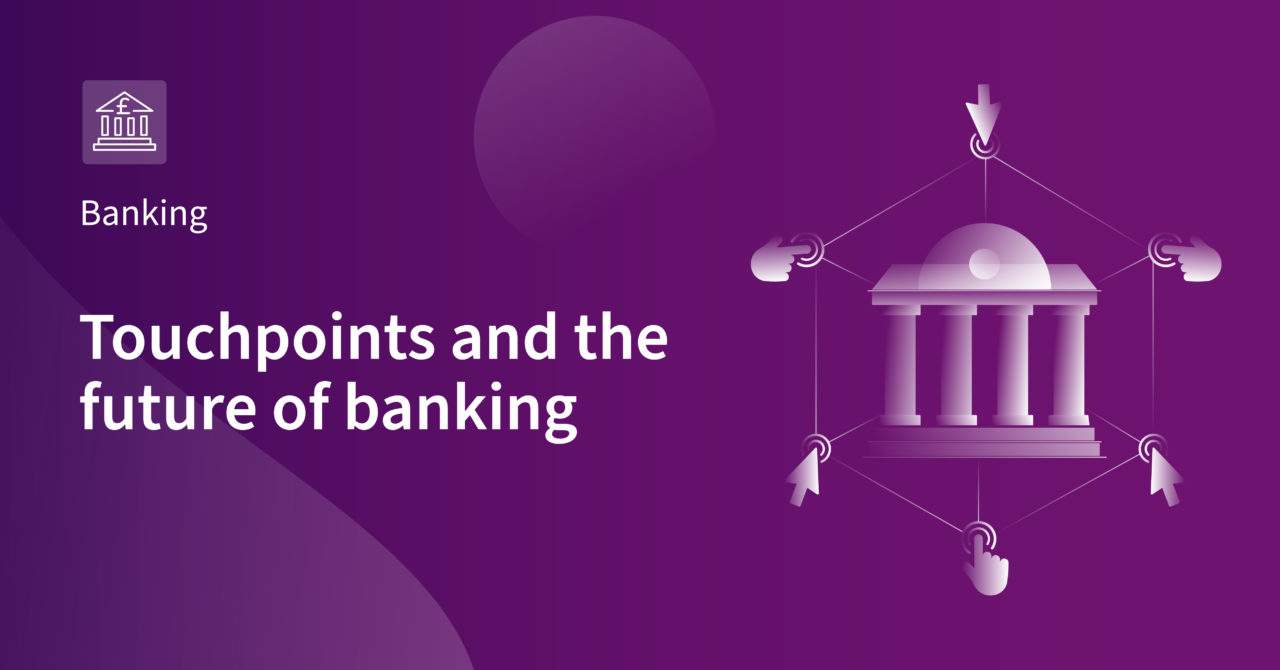Touchpoints and the future of banking

The spectre of COVID-19 has made many industries look different, very different today than they did a year ago. Banking, or rather how customers connect with their bank – especially for many previously ‘non digital’ segments, is one of many examples.
We recently discussed bank branches on the blog. However, it’s a topic all financial services participants should consider. That’s because changes felt by the customer-facing end of the industry will be reflected in other areas, too. Understanding these changes can help us understand how a range of different customer touchpoints for banks might change in the future.
Times of crisis and change, such as global pandemics, can also be times of opportunity. And that’s how financial services organisations should be thinking. The critical question is how can you better interact with your customers? And the answer has far-reaching implications.
The COVID accelerant
Many of the changes in the way financial services organisations are currently interacting with clients would be occurring without a global pandemic. The migration to digital and the emergence of apps as a primary customer interface for retail banking, for example, occurred long before 2020.
But COVID-19 has acted as an accelerant for digital and data transformation. It’s caused a re-think of the end-to-end value chain for banks, especially when it comes to considering customer interaction, engagement and touchpoints. Data-driven reinvention in banking won’t just affect a select segment of a bank’s infrastructure or its customer base however, it will affect everything. Including its core business model.
Banking won’t ever return to where it was 12 months ago. But ways of communicating that have been adopted during a pandemic aren’t the end game. Rather, they’re a bridge between where we were and where we need to go. So, where are we headed?
Speed and personalisation
So much communication now takes place between bank and customer without a branch involved. This has led to a strain on contact centres that are having to manage a huge volume of customer engagement, picking up slack caused by branches being out of action.
In order to keep customer satisfaction high, contact centres are going to need robust, scalable support. And, in 2021, customers understand that they don’t always need to be helped by a human in the first instance, so AI can help, better funnelling and sorting customers. This is, of course, a mere sliver of the wider industry landscape context.
COVID-19 has also exposed financial services’ tendency to offer one-size-fits-all solutions. Technology must provide bespoke touchpoints for customers. Fintechs do this well, offering personal experiences via apps and interfaces. Similar solutions are being applied to loans, mortgages, insurance etc. These touchpoints may be robotic – but because they have been beautifully designed and built with specific needs in mind, they work.
How banks directly communicate with customers is changing too. For example, websites that offer information but little interaction are going out of fashion. Customers demand experiences that are immersive, interactive, and sympathetic to their needs. A static website is a wasted opportunity for financial services organisations, be they old, new, big or small.
Old world versus new
As we’ve said, times of crisis can be times of opportunity. Across the spectrum of ways that banks communicate with customers, 2021 offers a chance for financial services to experiment with approaches, trying different formats and experiences that meet the needs of a more digitally savvy and experience-centric customer base.
Reassessing touchpoints can lead organisations to ask more fundamental questions of their business. If you shake up how you communicate, you begin to rethink who you’re communicating with and why. For example, Handelsbanken is now concentrating it’s messaging and services on the power of local relationships. Tide is focusing on becoming the best business bank there is. Starling is doubling down on providing AI-led insights for their customers.
These organisations have veered away from the broad positioning that most banks once focused on. Specialisation increases a banks chance to engage customers, offering relevant solutions that drive customer satisfaction, growth and profitability. It would not be wise to consider however that a reimagined brand positioning can solve all of the problems. But certainly for Millennials and Gen Z brand – and especially where that brand lives is key. Data is an essential asset in understanding a rapidly growing customer base for whom banking is now increasingly important, but not necessarily tied to traditional banking sources- Gen Z’s usage of Neos as their primary bank increased from 4% to 15% during 2020 for instance while the generation does not possess the banking brand loyalty of their generational predecessors.
A bolder, brighter future
In times of crisis, it’s easy for businesses to play it safe, focusing on existing customers and hoping to survive without rocking the boat. The usual hurdles, such as legacy systems and resistance to digital change, can also put people off wanting to evolve and innovate.
But in these extraordinary times, with the right risk appetite, there are outsize opportunities for an organisation or organisations who are willing to go all in.
Amongst the chaos, this feels like a once in a generation opportunity for financial services to try different things, find new markets, please customers in innovative ways, and capture the long-term interests of a new generation. The window of opportunity won’t last long and whether banks choose agility and boldness over tradition and fearfulness, is up for debate. But for those that do, gains are there for the taking.